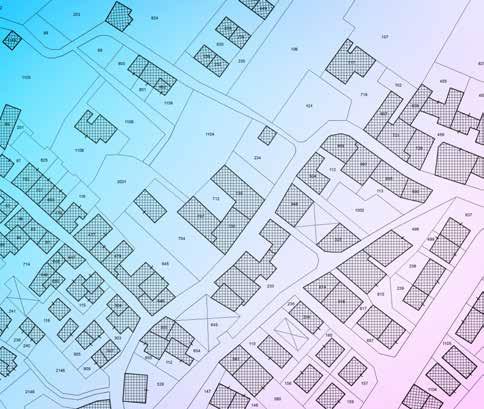
12 minute read
Legislative Update
from AZRE May/June 2021
by AZ Big Media
COVID-19 and the Arizona rental housing industry
More than a year into the COVID-19 pandemic, the rental housing industry is still reeling from the aftereffects of both extreme economic duress and unprecedented government overreach.
The industry remains under the grips of a federal eviction moratorium with no indication from the government as to when rental property owners’ rights will be restored. While the federal executive branch has been unrelenting, we are starting to witness the judiciary push back with federal judges in Texas, Tennessee and Ohio declaring the federal eviction moratorium as unconstitutional. Those cases are now under appeal.
The 2021 Arizona Legislative Session has been in full swing since January, and lawmakers have been considering a record-breaking 1,829 bills and resolutions. While most of them — almost 1,500 bills — died throughout the process, the Arizona Multihousing Association (AMA) was successful in moving key legislation forward.

Courtney Gilstrap LeVinus
AMA
VIRTUAL COURT MADE PERMANENT
The AMA was focused on making one COVID-related policy permanent. Nearly a year ago, in response to the pandemic, Arizona courts ended in-person appearances for eviction matters and moved all the hearings to a video or telephonic court system.
Though the initial rollout had some technical challenges, it soon became clear that remote or “virtual” court appearances could be beneficial to renters who no longer needed to take time away from their daily responsibilities to appear in person at the actual courthouse.
While some opponents initially expressed concern over access for lowincome renters, the data quickly proved that the digital divide is not nearly as large as some perceived thanks to the ubiquitous use of smartphones.
According to the National Center for State Courts, going virtual has enabled greater participation in the justice system, with New Jersey seeing its 20% Failure to Appear rate drop to zero, and Michigan seeing its 89% appearance rate increase to 100% after the adoption of online court appearances.
Here in Arizona, the Failure to Appear rate in eviction action proceedings dropped 31% in the Maricopa County Justice Courts. As stated by Michigan Chief Justice Bridget Mary McCormack, going online can make courts not only safer but “more transparent, more accessible and more convenient.”
Seeing the clear benefits to renters normally burdened with taking public transportation to court, taking time off from work or finding childcare, Sen. Warren Petersen (LD-12) introduced SB1322 to make virtual court permanent. The bill has already been signed, and once it takes effect, any party, including an attorney or witness upon written notice to the court, will be permitted to participate at the initial appearance remotely by using a telephone or video conference connection.
AFFORDABLE HOUSING CENTER STAGE
Over the past few years, and especially during the pandemic, the rhetoric around housing affordability has increased dramatically. We have seen a new level of scrutiny and a bevy of unconstitutional ideas to address the issue. Unfortunately, there has been little, by way of proactive policy interventions, to address the true root cause of the issue — supply. A recent National Apartment Association study shows that Arizona needs to build at least 17,000 units per year just to keep up with demand — the vast majority of which need to be attainable.
Just about every economic marker indicates that we need to build more housing and find ways to incentivize housing construction, from creating new financing mechanisms to removing regulatory barriers, such as antiquated zoning laws, rather than creating new regulatory schemes as some policymakers and academics have suggested.
One such policy intervention is a statelevel Low Income Housing Tax Credit (LIHTC) program, and it is a policy idea that the AMA and other housing stakeholders have been working on in partnership for several years. This year, Rep. Regina Cobb (LD-5) and Sen. David Gowan (LD-14) have been spearheading the efforts to establish a state program and create $480 million in new financing for the state of Arizona.
State LIHTC is modeled after the federal program signed into law by President Ronald Reagan as part of his Tax Reform Act of 1986. Made permanent in 1993, federal LIHTC has since been sustained by both Democratic and Republican presidents as well as continued by President Donald Trump in his Tax Cuts and Jobs Act of 2017. Federal LIHTC has helped finance approximately 47,000 affordable housing units in Arizona since 1987.
If state LIHTC is approved this year, it is estimated that nearly 1,000 new affordable units will be created annually under the program.
NEW GUIDANCE FOR DEALING WITH ANIMALS
A resident’s animals, whether they are pets, service animals or emotional support animals, can present unique challenges for rental property owners. It can be especially challenging when the resident dies and an animal is left behind in the unit.
Animals in these unfortunate situations have historically been treated like personal property, no different than a couch or a television. Because of this, property owners are left in the untenable position of having to choose between the welfare of the animal or potentially violating state law to enter the unit to provide care to the animal.
To rectify this gray area of the law, and in response to the legal conundrum, Rep. Shawnna Bolick (LD-20) introduced HB2507 to provide clear guidance to rental property owners in the event the resident dies and an animal is left behind.
Under the new law, which was signed by Gov. Doug Ducey in March, a rental owner may release an animal after one day to a relative if the owner cannot contact a named authorized person on the lease or if the owner was not provided with the contact information of an authorized person.
The bill also allows the same remedy in the event the renter is “incapacitated,” which in light of the COVID-19 pandemic, is especially important for residents who may be hospitalized for long periods.
HARMFUL BILLS DEAD FOR THE YEAR
While the AMA was successful in passing key legislation in 2021, it was equally successful in defeating legislation that would have been detrimental to the rental housing industry. In fact, the 2021 legislation saw a historic level of anti-rental housing bills introduced by lawmakers with more than 25 bills introduced that took direct aim at the industry.
Courtney Gilstrap LeVinus is the executive director of the Arizona Multihousing Association.
TIME FOR CHANGE?

New economic analysis shows that Arizona can win big with property tax reform
Coming out of the COVID-19 pandemic, Arizona has a special opportunity to position itself as a premier choice for corporate relocations and new business attraction. Recently, we’ve celebrated several big wins with company expansions that will bring many new jobs to our state.
Specialized tax treatment, such as Foreign Trade Zones, which dramatically lower property taxes for businesses within the designated area, helped make these major investments possible. However, these benefits are not available to all businesses. They are constricted to specific geographic areas.
Opportunities exist for many more job creators, both large and small businesses, to make our state home if we can address an area of our tax system where Arizona is currently not competitive with other markets — commercial property taxes.
NAIOP members include real estate developers and brokers who scour the U.S. and beyond to find tenants for their office buildings and industrial facilities. Time and time again, we hear that high commercial property taxes factor negatively into site selection decisions.
To better understand the full scope of this problem, NAIOP commissioned Rounds Consulting Group to conduct an economic impact analysis. That report revealed several important insights.
Arizona’s commercial property taxes currently are not competitive, despite progress being made over the past 15 years. Property in Arizona is valued by the Department of Revenue and county assessors.
Currently, commercial properties are taxed based on 18% of their assessed value. This is often referred to as the assessment ratio. By comparison, residential properties are taxed using a 10% assessment ratio.
Effective tax rates are the actual amount owed based on the assessment ratio and the relevant jurisdictions’ tax rates. When we look at the effective tax rates on a national basis, Arizona ranks the 20th highest for office properties and the 10th highest for industrial properties.
When we dig deeper, the situation becomes more dire. Our key competitors are regional markets such as Houston, Denver, Salt Lake City, Boise, Los Angeles and Las Vegas, which that site selectors evaluate for companies looking to expand in the Western U.S.
When analyzing these key competitors, Phoenix has the third highest effective tax rate for office properties and the second highest for industrial properties. Although Houston tops the list, it is important to note that Texas has no income tax and offers bountiful incentives to companies looking to relocate to the Lone Star State.
Job growth is particularly important following a recession. The world has fundamentally changed, and some markets will come out ahead while others will fall behind. Getting the economic fundamentals right will position Arizona to be among those markets poised for growth.
Arizona’s strong revenue position makes it possible to take decisive action this year that will improve our ability to compete for new jobs. Lawmakers are currently debating a tax package to aid in Arizona’s continued economic recovery from the COVID-19 pandemic and to position our state for increased growth.
One proposal would bring the assessment ratio down from 18% to 17%, which would move Arizona’s national ranking on office property from the 20th highest to the 27th, and on industrial property from the 10th highest to the 19th. This proposal is structured in a way that it would not shift the tax burden to other types of taxpayers, nor would it decrease funding for public schools.
Other proposals would go farther, by bringing the assessment ratio down to 15% over a longer time horizon. Either approach would meaningfully enhance our ability to attract private investment and job creators to our state.

Suzanne Kinney
NAIOP
Suzanne Kinney is the president and CEO of NAIOP, a leading organization for developers, owners and related professionals in office, industrial, retail, and mixed-use real estate.
Shaping the future
Thoughtful zoning and design is at the heart of modern growth and development

With 300 days of sunshine every year, professional and college sports teams, more than 50 museums, 200-plus miles of hiking trails and no shortage of entertainment options, including restaurants, concert venues, movie theaters and shopping, Greater Phoenix provides residents and visitors with a wonderful place to live, work and play. With its abundance of activities and great quality of life, it’s no surprise that our region also has become known for its rapid growth and development opportunities.
While many older residents, often proudly referring to themselves as “Valley natives,” fondly remember the early days of Phoenix and its surrounding cities, thoughtful growth has provided the jobs, housing and entertainment options that make this area a unique and an enjoyable place to live for natives and newcomers alike.
The incredible growth that’s come to the Valley of the Sun — including housing developments, medical and office complexes, entertainment centers and mixed-use developments — often has taken advantage of an area’s need for infill development by putting vacant or underused properties to use. For example, in 2019, home developer D.R. Horton purchased 120 acres of vacant land for a large single- and multifamily community called Arabella. Plans for the development call for 420 single-family homes and 286 duplex/town homes, along with numerous amenities. This community model that includes single- and multifamily dwellings is popular around the Valley and offers residents comfortable housing options close to jobs and entertainment.
Also increasing in popularity are mixed-use developments that incorporate housing as well as office and commercial space. These types of multifunctional complexes allow owners to develop creative designs that benefit residents, workers and surrounding communities alike. For example, RED Development and Macerich’s Paradise Valley Mall redevelopment plans include an exciting mix of office, multifamily, grocery store, retail shops and other uses. This modern approach to design creates inviting spaces for community members to gather and enjoy life in sunny Arizona.
The Valley has also seen tremendous growth in the bioscience and tech sectors. Phoenix is home to industry leaders such as Honeywell, Intel, JDA Software and Insight. Further growth is on the horizon, with plans for a new semiconductor factory in the works. The Taiwan Semiconductor Manufacturing Co. purchased 1,129 acres of undeveloped land for $89 million in December 2020.
While it is undeniable that the Valley has amazing things to offer its residents and workforce, our growth and development isn’t a free-for-all where big developers or landowners can build whatever they please, wherever they please. Instead, there are systems in place to protect and enhance the character of each area of the Valley by ensuring our expansion is thoughtful and appropriate. Local governments enforce city codes and zoning ordinances — rules that describe various use categories, where such uses are appropriate, as well as the standards developments must meet and the processes companies must follow when they wish to develop or redevelop a particular property.
Despite a developer’s best efforts to present thoughtful plans for a site, large-scale projects or major use changes often are met with controversy. While many Valley residents acknowledge the need for progress and growth, there are those who disagree and would prefer to see the growth occur elsewhere or with a different design. Common concerns are traffic and building height. Land use and zoning professionals can help developers and landowners of all sizes navigate the development process, ensuring we continue the trend of thoughtful and appropriate design enhancing the character of the Valley and the quality of life of its residents for generations to come.

Alicia “Ali” Bull
Burch & Cracchiolo
Alicia “Ali” Bull is an associate attorney at Burch & Cracchiolo. Her practice focuses on land use and zoning law and commercial litigation.










